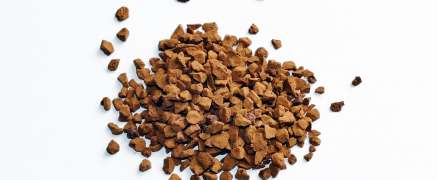Not for the faint hearted
The word “instant coffee” alone may cause some people run away. However, with more than $ 28 billion in market size globally, soluble coffee is definitely not a niche product, accounting for almost 1/3 of total global coffee consumption. The reasons for drinking this coffee, how it is made and who invented it, that’s what it’s all about today.
5 Facts
- Nescafé has been in Germany since 1943 and is the leading instant coffee brand in the world.
- 41% of global instant coffee is consumed in the Asia-Pacific region.
- 17% of Germans regularly drink instant coffee.
- Bremen is the frontrunner – every fourth drinks instant coffee here.
- In Germany, the coffee tax for instant coffee is twice as high as for coffee beans – € 4.78 per kg
How it started
- Invented in 1881 by the Frenchman Alphonse Allais and registered as Patent No. 141520.
- In 1890 it was also patented by New Zealander David Strang.
- In 1938, the Swiss company Nestlé laid the foundation for industrial production with Nescafé.
- The original idea was to make coffee storable.
- During the Second World War, the triumphant advance of instant coffee started in the trenches, because you really needed no more than hot water.
Manufacturing
- Nescafé is mainly made with Robusta coffee beans mainly from Vietnam. Other important Robusta countries are Indonesia and Brazil.
- A coffee blend of different often inferior cheap coffee beans is first roasted very dark and ground to about 2 mm coarse.
- The coffee is then brewed with large percolators (the same principle as with an espresso pot) and filtered.
- For thickening the coffee to concentrate two methods are used.
- Spray drying: The water evaporates in a stream of hot air. What remains is a fine powder, which is slightly moistened and formed into loose lumps (agglomerate).
- Freeze-drying: The liquid coffee is frozen at -40 to -50 °C and crushed. The coffee grains are heated in a vacuum until the frozen water evaporates. The more common method, because the aroma is better preserved.
Companies
Nestlé is by far the largest producer of instant coffee, with over $ 13 million a year, followed by Jacobs Douwe Egberts, DongSuh Foods Corp., Tchibo and Ajinomoto Co. Inc.
Preparation and Taste
Add 2 tsp of instant coffee in the cup, hot water over it, stir. In fact, the promotional promise of quick and easy preparation, is correct. But the production of the granules took so long and left a decent CO2 footprint.
But what matters – the taste – is actually tolerable only with milk and other ingredients. My test object tastes burnt and bitter. This is certainly due to the rather dark roasting of the beans. No Coffee enjoyment. Perhaps that’s also the reason why instant coffee producer offer many coffee mixtures alongside classic coffees. I remember the very popular Kruger Cappuccino in my youth. The list of ingredients: sweet whey powder, sugar, instant coffee (12%), coconut oil, skimmed milk powder, salt, stabilizer sodium phosphate. I was young and did not know better.
Today I prefer to invest a minute more: Manually grind my beans from the roaster around the corner while the water is boiling. Coffee powder in the cup, hot water over it, wait a few seconds, stir, let coffee set briefly and done. That’s quick and easy too. Tastes better, has fewer calories and acrylamide, is free of sugar and additives, has more antioxidants and caffeine, and is more environmentally friendly. The coffee from beans smells better and you have a nicer crema.
But let’s face it, the world’s high instant coffee consumption is not just about convenience. Many coffee-growing countries export their raw coffee and do not roast / consume it in their own country. Instead they import processed instant coffee such as In Gabon, Ghana, Togo and the Central African Republic. It’s all about the money 😉


